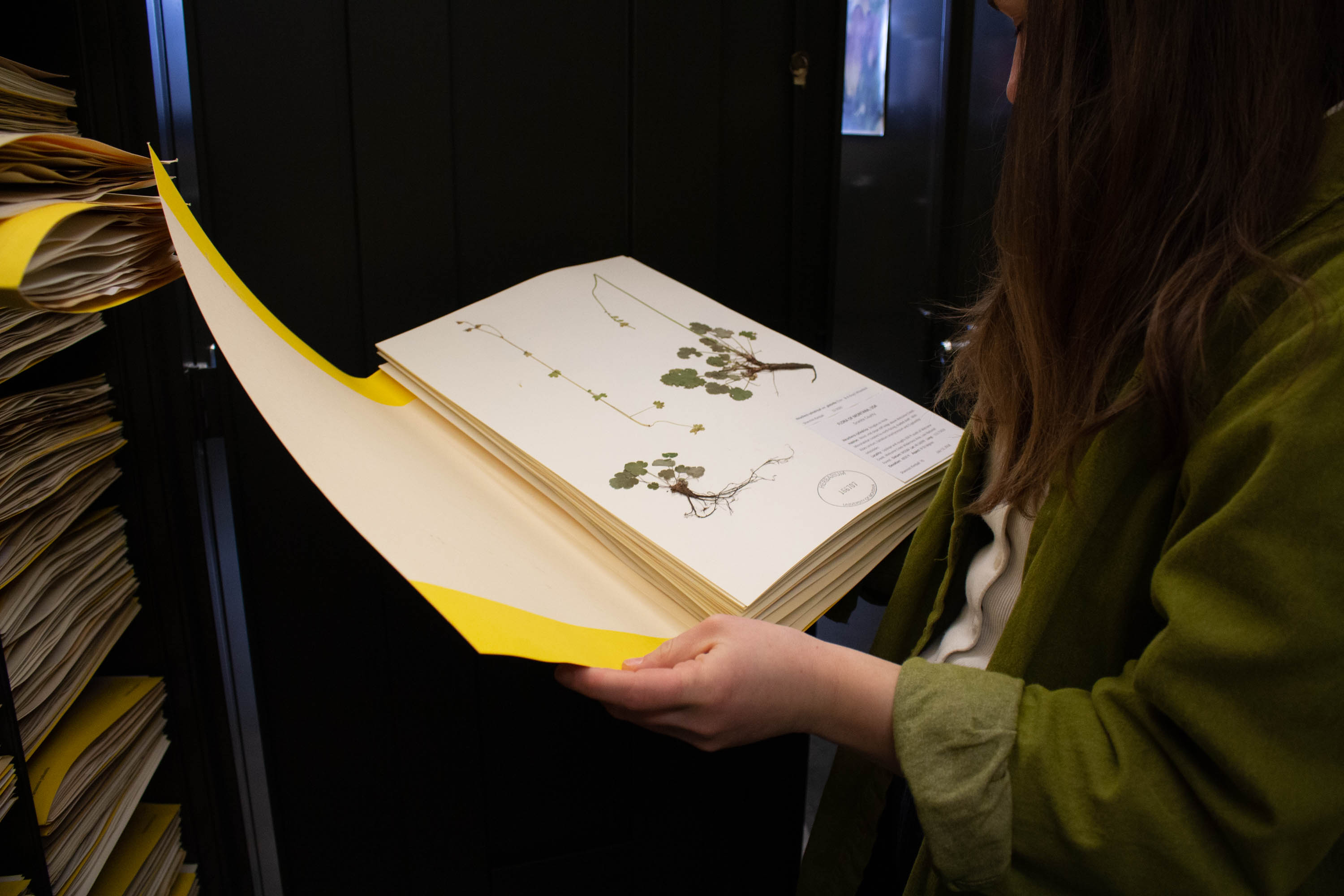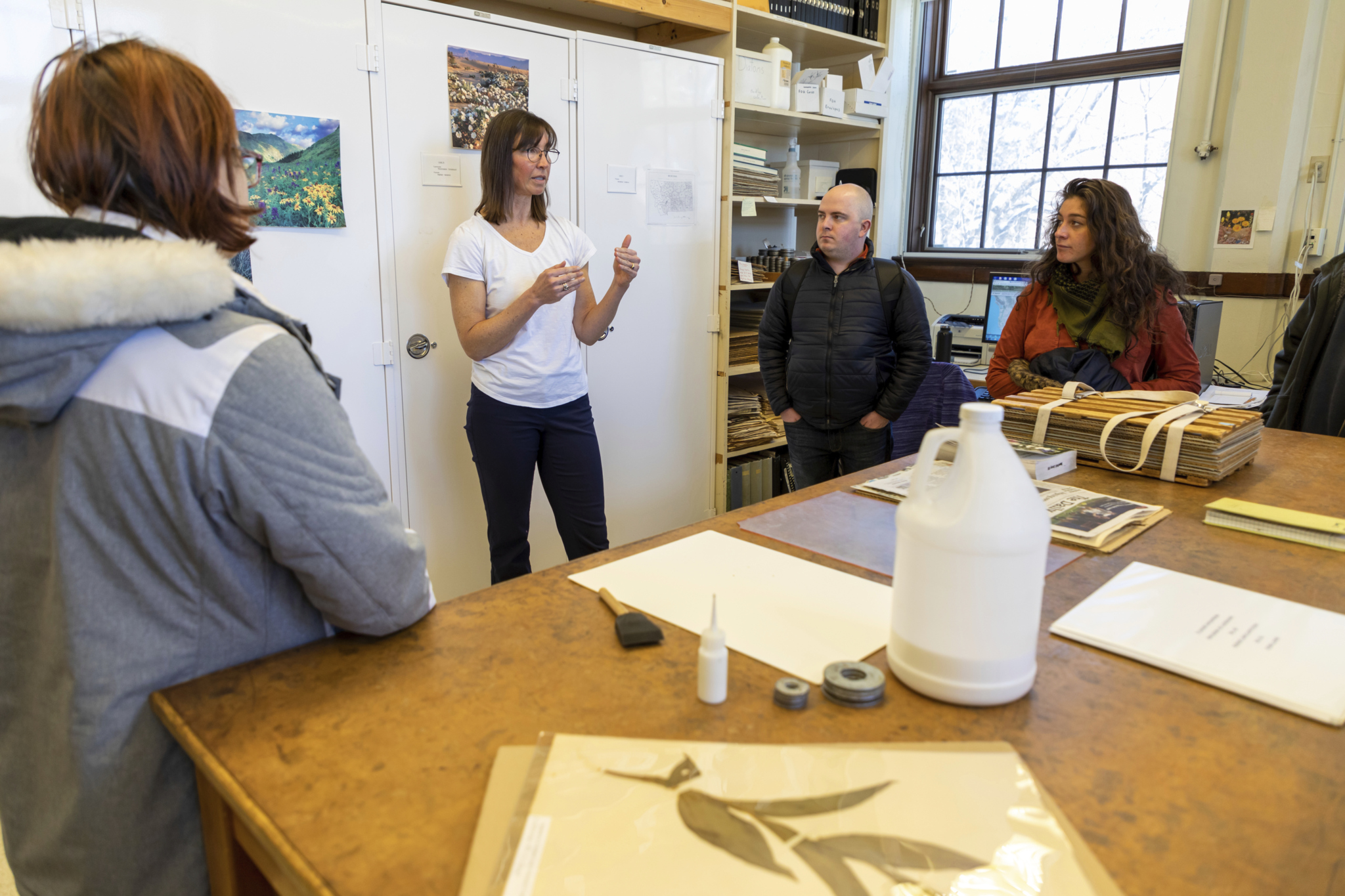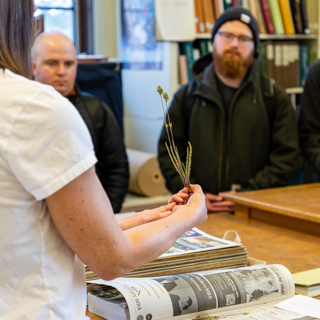Opportunities in the UM Herbarium
Student Internships and Opportunities
Starting Fall 2023, The Friends of the MONTU Herbarium (FOH) will be supporting undergraduate students through a paid internship opportunity each semester. A student will be paid $12.50/hr for 5 hours of work per week for 16 weeks throughout the semester for a total of $1,000. This student will either work on a specific curatorial project in the herbarium or may also conduct a research project using or adding to the collection. If interested please send a filled out application to: giovanna.bishop@umontana.edu. Spring 2024 Applications Due: Feb. 16th, 2024
Unpaid opportunities for students are available every semester in the herbarium. Past students have chosen to sign up for a herbarium research course to gain credits for the few hours they work throughout the semester. Otherwise students can always volunteer to gain valuable, hands-on curatorial experience in the largest Natural History collection on campus. If interested in signing up for credits or volunteering please contact the curator before the start of each semester.
Wondering why you might choose to work in the Herbarium? Are you interested in preserving biodiversity, learning more about the local flora, or how to collect plants? Do you want to learn how to identify fungi or lichens? Are you interested in data management or digitization? Do pests interest you, and would you like to learn about how museums manage pests? All of these topics and more are covered at MONTU and there are many projects and ongoing mysteries to solve in the collections that we need your help with.
Resources
The National Science Foundation funded a project to assemble resources for teachers to easily instruct their students about native plants. The first three links below offer detailed descriptions of different classroom activities that can be done by elementary-aged students. The last item has been created for older students and adult learners.
What is an herbarium covers the importance of herbaria in the overall goal of native plant preservation and conservation.
How to press a plant provides step by step instructions on making an individual plant collection, and assembling and using the proper tools for creating long-lasting, valuable specimens.
Creating a classroom collection allows classmates to share their noteworthy plant specimens with other students, teachers and parents through a colorful and educational display
Specimens in our Teaching Collection may be borrowed for educational purposes. These pressed, dried, mounted and labeled vascular plant collections provide tools for hands-on learning that is most suitable for older students.

Volunteer

Like herbaria across the world, there are always many tasks in the University of Montana Herbarium that need to be accomplished and not enough skilled hands to do them. Projects vary, and often involve mounting and cataloging herbarium specimens, cleaning, and reshelving used material into the collection.
Our current projects require much attention to detail as well as familiarity with operating a PC. We respectfully request that volunteers donate a minimum of 10 hours, due to the training time involved in learning the skills for each project.
If you would like to volunteer in the herbarium please begin by reading the list of volunteer opportunities. Next, contact the curator using the email address below. In your email indicate the project or projects that you find most interesting.
Learning Opportunities
Tours of the University of Montana Herbarium are available to the public. We encourage students of all ages to learn more about native plants and the importance of their preservation, both outdoors and within our historical archive.
The Herbarium is staffed part-time, Monday-Friday, so please contact the Curator for more information on scheduling a visit. Group tours are available and limited to roughly 12 people due to space constraints.
Small school group tours (less than 10 people) are also available. These tours provide an age-appropriate overview of the importance of herbaria and a short lesson on creating an herbarium specimen using our pressed plant teaching collection. Please contact us for more information.

